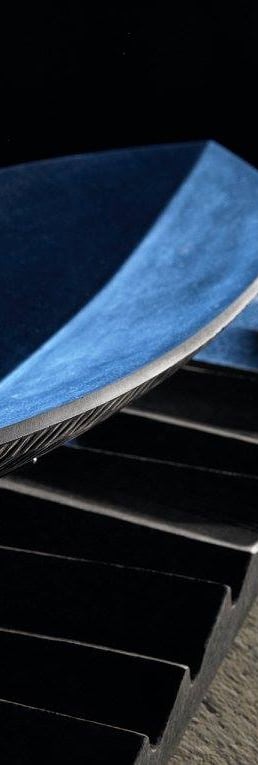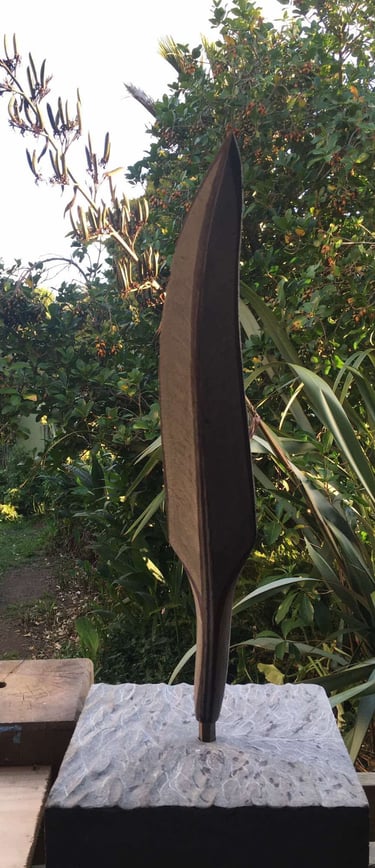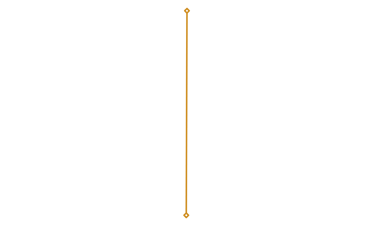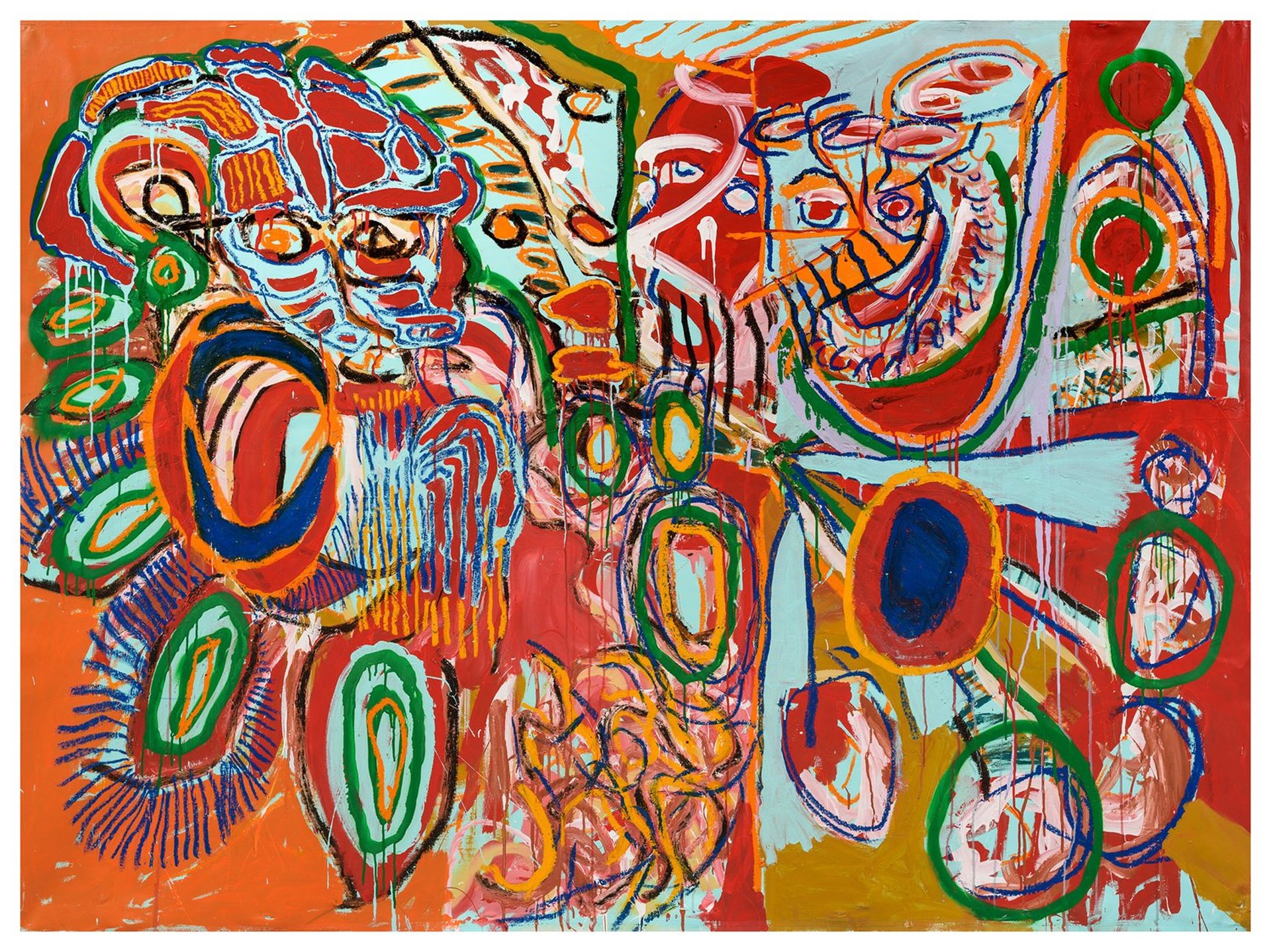
Wai Ora - The Pulse of Life
January 17th - February 17th
A celebration of Māori art
Featured Work: Ercan Cairns - 15.07.2021
Show Synopsis
Wai Ora: The Pulse of Life, a powerful curated exhibition that honours water as the very heartbeat of existence. Beyond being a natural resource, waiora embodies the purest form of life—a vital force that sustains, nurtures, and connects us to one another and to Papatūānuku (Earth).
In te ao Māori, waiora reflects the profound significance of water, transcending its physical form. It is the pulse and lifeblood of whakapapa (genealogy), whenua (land), and wairua (spirit)—an essence that nourishes not only the body but also the soul. This exhibition brings together a remarkable collection of works by both established and emerging Māori artists, each exploring the transformative and life-giving qualities of wai—the element that flows through our veins, our whenua, and our culture.
Through sculpture, ceramics, and painting, these artists delve into the spiritual and environmental significance of water, reflecting on themes of ancestral knowledge, guardianship of the land, and the deep, interconnected relationship between humanity and nature.
Each piece of art pulses with the rhythm of the earth, echoing the heartbeat of waiora—a force that is not only the lifeblood of our planet but also a reflection of the interconnectedness that binds us all.
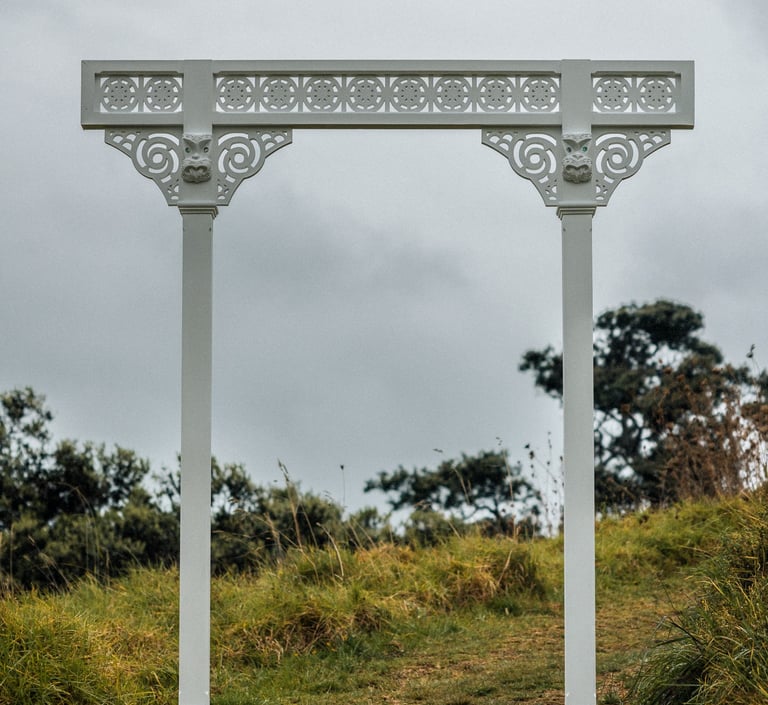

Te Kupenga - Chevron Hassett
Amanda Kemp
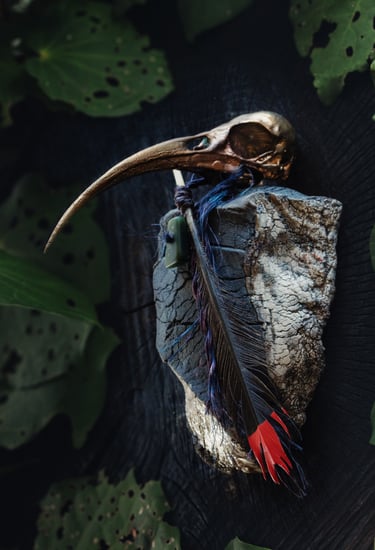

Ko Papatu tōku maunga,
Ko Te Arai tōku awa,
Ko Horota tōku waka,
Ko Ohako toku marae,
Ko Rongowhakaata, ko Te Aitanga-a-Mahaki,
Ko Ngai Tamanuhiri oku iwi
No Turanga nui a kiwa ahau,
Ko Amanda toku ingoa
Amanda has worked as an artist both in Aotearoa and Europe, and over a 30-year period has perfected working in multiple mediums. She specializes in hand-built ceramic sculpture, often in the form of wall installations.
Her work is very intuitive and energy based. She works in what she describes as a state of ‘no Mind’ and therefore prefers not to hold onto concepts which determine her work. She does however focus on the integrity of her making processes, as she feels the artwork has the ability then to He mau pūngao hold energy. In respect of this, she prefers to use natural materials such as wild clay and oxides, and often includes methods that require the elements (fire, earth and water).
Amandas work is deeply localized to her whenua home land but is also expansive in spirit. Her touch stone is the dynamic between light and shadow in our human experience, which expands to all Ruku i te pō, ruku i te ao.
Delve into the dark, emerge in the light.
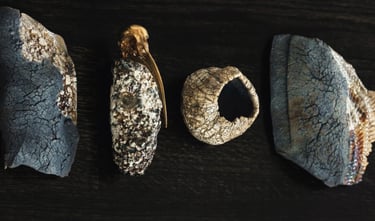

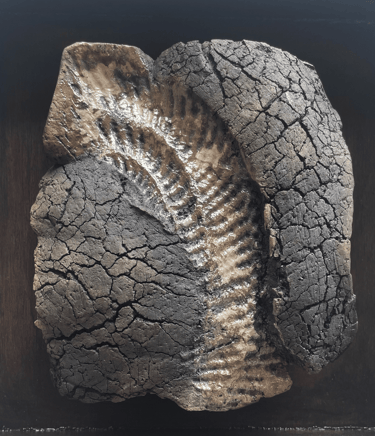

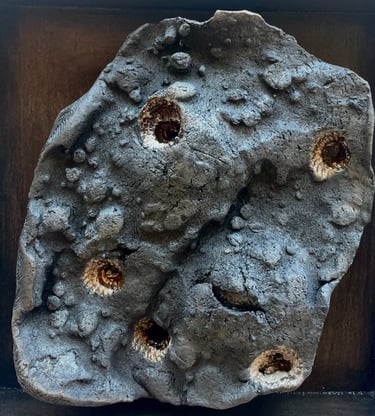

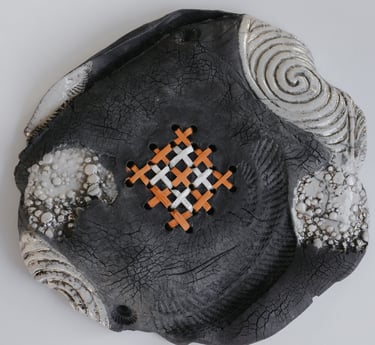

Anton Forde
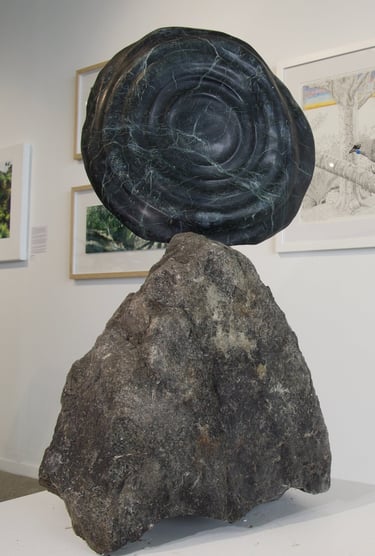

Anton Forde began carving when he was 18 and has studied under sculptors Paul Dibble, Gary Whiting and Paul Hansen. Under the supervision of Professor Robert Jahnke at Massey University’s Māori Visual Arts Programme Toioho ki Āpiti, he gained a Post Graduate Diploma in Māori Visual Arts and a Masters of Māori Visual Arts with First Class Honours. Forde has since spent extended periods living in Taranaki and in Ireland, where he learnt ancient art themes. He now lives on Waiheke Island. Forde’s works feature in public and private collections both in Aotearoa and around the world.
A time, a place, an island where water flowed before.. we were here,
When you drop a kõhatu(stone) into still water it creates a beautiful artwork, I often wonder why we don’t think about what happens to the kõhatu (stone) afterwards.
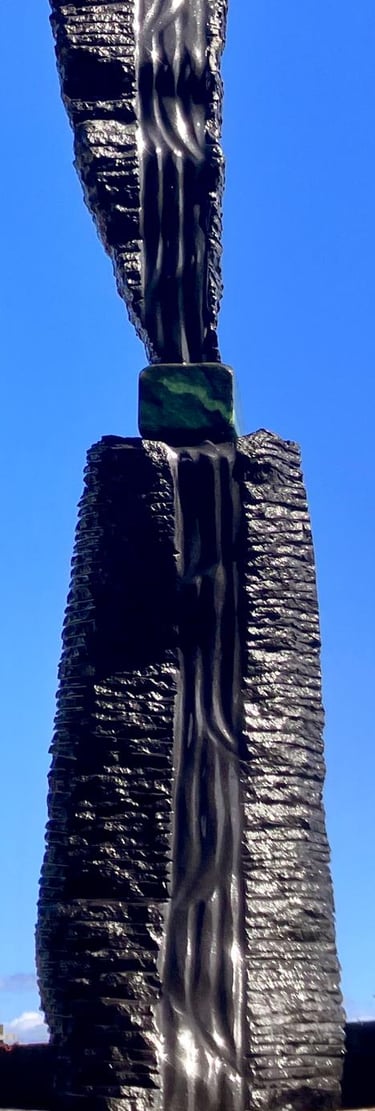

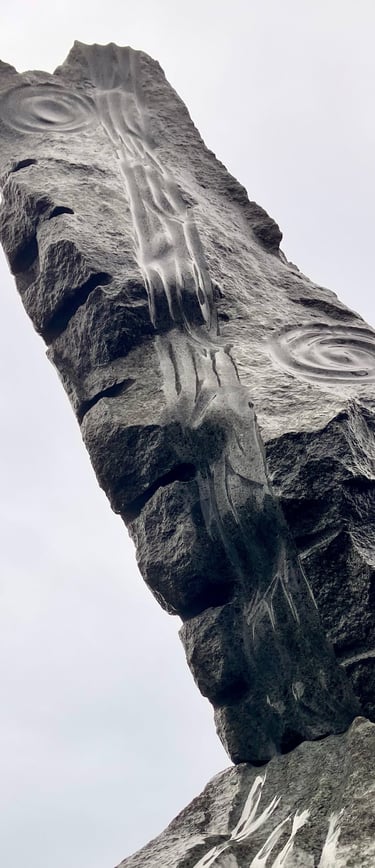

Carla Ruka
Ngā Puhi, Ngāti Whātua, Tauiwi (European). Carla Ruka is a clay artist deeply inspired by Hineukurangi—the Māori deity of clay—the natural world, and her dual heritage of Māori and European descent. A maker since 2000, Carla has developed a distinct style of coiling that reflects her Māori worldview, creating sculptural works that are both innovative and grounded in tradition.
In 2022, Carla was selected by the Ceramic Association of New Zealand as the Touring Potter for the “Coil Aotearoa” project, funded by Creative NZ. This year-long tour included workshops on large-scale sculpture, artist talks, and community outreach programs across Aotearoa, showcasing her unique techniques and fostering connections with diverse communities.
Carla is a passionate advocate for indigenous ceramics, participating in national and international exchanges to build connections with other indigenous clay artists. Notable projects include collaborations with Lapita potters in Fiji (2023 and 2024) and a cultural exchange in Seneca, New York State.
As the owner of Carla Ruka Limited and Principal Cultural Advisor to Te Tuhi Art Gallery in Auckland, Carla takes on a variety of creative projects. She teaches kapa haka, mentors emerging artists, and has hosted the online ceramic class project Make a Cup. Her collaborations include “Ka Mua, Ka Muri,” a large-scale installation created with weaver Beronia Scott for the Cordis Hotel in Auckland.
Carla is also an experienced curator, having organized exhibitions such as NUku (Te Uru Waitākere Contemporary Gallery, 2020) and Hineukurangi (Suter Art Gallery, Whakatū, 2024).
A dedicated community leader, Carla is an active member of Ngā Kaihanga Uku (Māori Clay Artist Collective), a board member for Papatūnga (Te Tuhi Artist Programme), and a committee member for O Wairoa Marae. She has also served as a director and continues as a committee member of Auckland Studio Potters.
The Crux (Māori Angels Series) Created from a sculpture body clay and washed in an earth slip made from clay earth from the north of Aotearoa, New Zealand, The Crux is adorned with a Kowhaiwhai pattern (Triangular Pattern) from my ancestors across the head, these refer to the mountains and rivers in which we came from. The Manaia figure (Carved figure on head) is the guardian in which we all carry with us. The hand prints are a reminder to stay true to yourself. Development, evolution, mastery and generosity. Meaning: The Crux is a symbol of your own health and wellbeing. In order to look after another you must first look after yourself, pull things apart, fit them back together and grow from the experience.
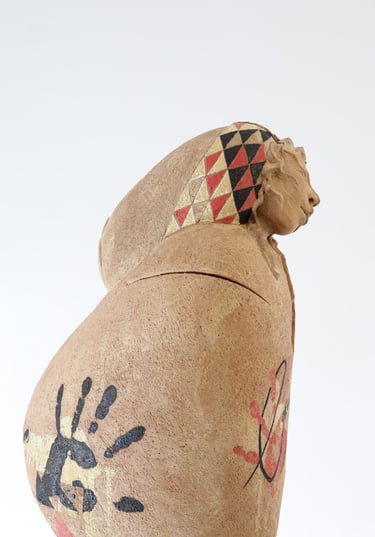

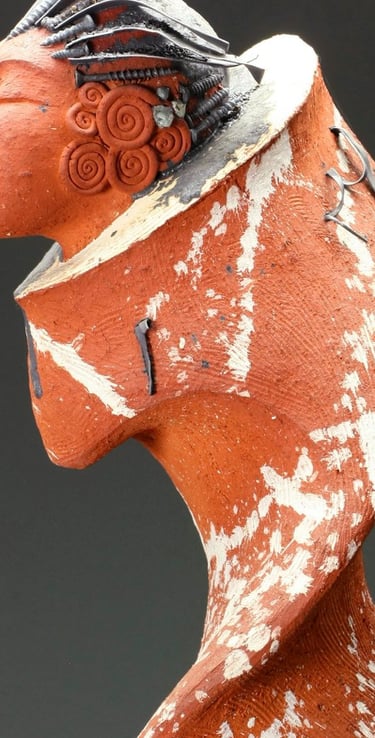

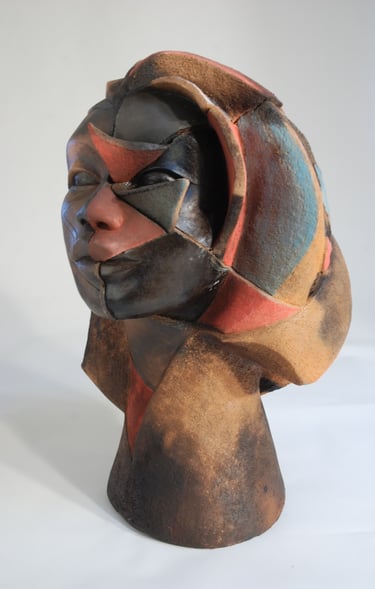


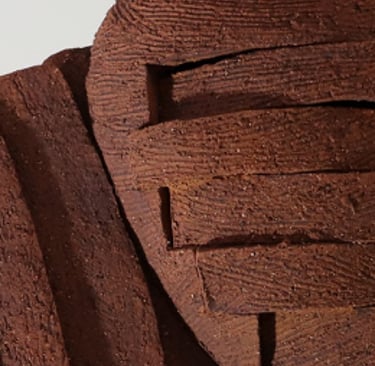
Chevron Hassett


Ngāti Porou, Ngāti Rongomaiwahine, Ngāti Kahungunu
Born in 1994 in Te Awakairangi (Lower Hutt) and now based in Tāmaki Makaurau (Auckland), Chevron Hassett is a multidisciplinary artist whose work bridges traditional Māori practices with contemporary forms. A graduate of Massey University with a Bachelor of Design (Hons) and a diploma in Indigenous Art (Whakairo Māori carving), Hassett’s practice includes photography, sculpture, and public installations.
Guided by the principle of whanaungatanga (relationships and connections), Hassett’s work delves deeply into the narratives of modern Māori identities, exploring the intersections of colonial histories, urban indigeneity, and cultural resilience. His art often merges customary whakairo (carving) and kōwhaiwhai (painted patterns) with contemporary materials, reimagining these traditions for today’s sociocultural context.
Hassett’s notable projects include the exhibition Far, Far Away at Artspace Aotearoa (2023), which etched his urban Māori experience into a vivid autobiography, and Te Kupenga at Waiheke’s Sculpture on the Gulf (2024), a hybrid sculpture that intertwines Māori narratives with colonial architectural motifs.
He has exhibited widely across Aotearoa and internationally, with highlights including The Children of Māui at The Dowse Museum (2019), Moment of Truth at Twentysix Art Gallery (2023), and Te Manawa Ora in Sydney (2019).
Hassett’s accolades include the Creative New Zealand Ngā Manu Pīrere Award (2017) and the Arts Foundation Springboard Award (2022), reflecting his dedication to fostering meaningful dialogues between the past and present.
Currently, Chevron is completing a significant public commission for Hutt City Council and continuing to explore the evolving narratives of Māori identity through his art.
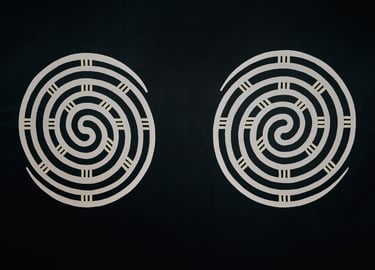

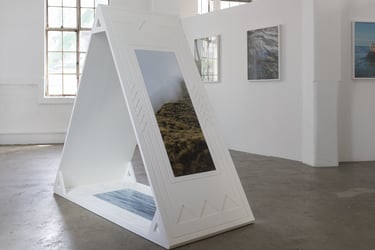

Chevron Hassett - Ta Manawa Tapu
Chevron Hassett - Ensemble
Chevron Hassett - Te Kupenga
Ercan Cairns
Ngāi Tūhoe - Ercan Cairns is a bold and passionate emerging artist whose innovative approach has gained recognition in Tāmaki Makaurau's dynamic art scene. A proud uri of Ngāi Tūhoe, Ercan bridges the gap between ancestral mōhiotanga and contemporary artistic expression through his distinct fusion of fluid acrylics and richly textured oil pastels. His layered, intuitive compositions pulse with energy and emotion, revealing an aesthetic that pays homage to influences such as Emily Karaka, Jean-Michel Basquiat, and Picasso while forging a unique and authentic voice.
Ercan's confident gestural mark-making is immediate, expressive, and raw, reflecting both his deep connection to cultural roots and his fearless exploration of modern art forms. Eschewing traditional Mātauranga Māori visual structures such as kōwhaiwhai, whakairo, and raranga, Ercan opts to reimagine these motifs with gestural vitality and vibrant color, imbuing his symbols with a dynamic "wairua" that expresses his interpretation.
He tino kaha te aurere, te torotia, te akoranga o tēnei kaimahi toiataata. Ercan does not follow the customary symbolism of Mātauranga Māori kowhaiwhai, whakairo or raranga which have definite structures of tapu/noa, rhymical patterns of curvilinear and rectilinear shapes that have a balance of positive and negative spaces.
Grounded in the whenua of Te Urewera, Ercan draws inspiration from time spent with his whānau at Ruatāhuna, hunting with his father, and connecting to the land near their marae Ōhāua, accessible only by horseback or hiking.
He tino nui tōna kaha mō ngā toiataata. This bond with his whakapapa is an integral thread in his practice, manifesting in his courageous exploration of identity, heritage, and the boundaries of contemporary Māori and Tongan visual culture. A self-taught artist, Ercan’s development has been fueled by passion, perseverance, and an openness to learning through collaboration with renowned artists such as Emily Karaka, Tavita Latu, Taniela Petelo, and Dagmar Dyck, as well as Tūhoe luminaries Tame Iti and Aimee Rātana. Guided by the mentorship of figures like Donn Rātana, Ercan has cultivated a practice rooted in rigorous research and expressive innovation.
Ercan Cairns stands at the forefront of a new wave of Māori artists, fearlessly challenging conventions while honoring his whakapapa. His works resonate with the vitality of contemporary Aotearoa and hold the promise of significant contributions to the future of art in Aotearoa and beyond.


Ercan Cairns - 15.07.2021
Ercan Cairns - 15.09.23
Ercan Cairns - 13.09.23
Nigel Scanlon
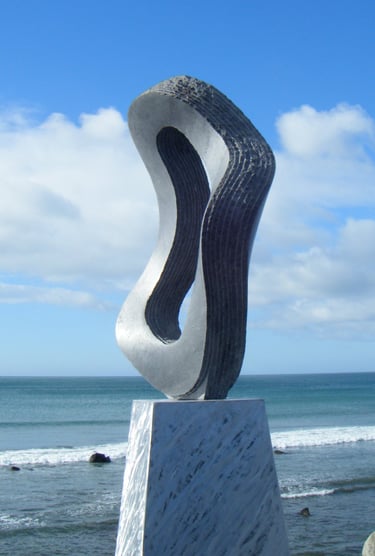

Nigel Scanlon, a prominent Māori artist from Waiheke, New Zealand, is celebrated for his sculptural carvings in stone and wood. Drawing inspiration from his Māori heritage and natural surroundings, Nigel expertly combines traditional Māori art forms with contemporary styles. His dynamic sculptures reinterpret Māori iconography, reflecting abstract expressionism and organic modernism. Nigel's mastery in carving highlights the intricate textures of stone, creating culturally and environmentally significant pieces.
Artist Statement
My creative path has allowed me to explore various media over the past 17 years. My wairua (spirit) attracts me to carving and I have found myself returning to stone sculpting above all other mediums. Through my carvings I communicate my connection with the whenua (land) and my whakapapa (geneology). This provides an artistic outlet that carries me through times of transition and vision in my life.
